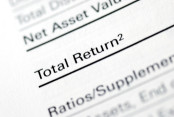
Dividend Investing Ideas Center
Critical Facts You Need to Know About Preferred Stocks
Have you ever wished for the safety of bonds, but the return potential...
















Name
As of 04/24/2024Price
Aum/Mkt Cap
YIELD
Exp Ratio
Watchlist
YTD Return
-1.8%
1 yr return
0.8%
3 Yr Avg Return
-3.1%
5 Yr Avg Return
-0.1%
Net Assets
$340 M
Holdings in Top 10
19.3%
Expense Ratio 0.20%
Front Load N/A
Deferred Load N/A
Turnover 24.00%
Redemption Fee N/A
Standard (Taxable)
N/A
IRA
N/A
Fund Type
Exchange Traded Fund
Name
As of 04/24/2024Price
Aum/Mkt Cap
YIELD
Exp Ratio
Watchlist
| Period | BGRN Return | Category Return Low | Category Return High | Rank in Category (%) |
|---|---|---|---|---|
| YTD | -1.8% | -15.2% | -2.4% | 4.62% |
| 1 Yr | 0.8% | -10.4% | -2.5% | 92.37% |
| 3 Yr | -3.1%* | -1.2% | 4.2% | 77.97% |
| 5 Yr | -0.1%* | -0.1% | 3.7% | N/A |
| 10 Yr | N/A* | 0.0% | 4.6% | N/A |
* Annualized
| Period | BGRN Return | Category Return Low | Category Return High | Rank in Category (%) |
|---|---|---|---|---|
| 2023 | 2.7% | -9.4% | -0.6% | 39.52% |
| 2022 | -15.3% | -1.3% | 7.0% | 23.01% |
| 2021 | -3.5% | 0.5% | 200.9% | 41.28% |
| 2020 | 4.9% | -15.5% | 3.1% | N/A |
| 2019 | 5.8% | -0.6% | 30.6% | N/A |
| Period | BGRN Return | Category Return Low | Category Return High | Rank in Category (%) |
|---|---|---|---|---|
| YTD | -1.8% | -15.2% | -2.4% | 85.38% |
| 1 Yr | 0.8% | -12.6% | -2.5% | 82.44% |
| 3 Yr | -3.1%* | -1.6% | 4.2% | 71.19% |
| 5 Yr | -0.1%* | -0.1% | 3.7% | N/A |
| 10 Yr | N/A* | 0.0% | 4.6% | N/A |
* Annualized
| Period | BGRN Return | Category Return Low | Category Return High | Rank in Category (%) |
|---|---|---|---|---|
| 2023 | 6.5% | -9.4% | -0.6% | 39.52% |
| 2022 | -13.1% | -1.3% | 7.0% | 23.01% |
| 2021 | -2.8% | 0.5% | 200.9% | 45.87% |
| 2020 | 6.9% | -15.5% | 3.3% | N/A |
| 2019 | 9.7% | 0.1% | 30.6% | N/A |
| BGRN | Category Low | Category High | BGRN % Rank | |
|---|---|---|---|---|
| Net Assets | 340 M | 21.8 M | 93.5 B | 69.47% |
| Number of Holdings | 334 | 5 | 7040 | 71.97% |
| Net Assets in Top 10 | 65.5 M | -839 M | 6.06 B | 53.79% |
| Weighting of Top 10 | 19.31% | 6.1% | 100.0% | 78.79% |
| Weighting | Return Low | Return High | BGRN % Rank | |
|---|---|---|---|---|
| Bonds | 98.01% | 36.86% | 100.73% | 43.94% |
| Cash | 10.67% | -2.75% | 67.17% | 62.88% |
| Convertible Bonds | 3.37% | 0.00% | 14.16% | 51.52% |
| Stocks | 0.00% | 0.00% | 0.70% | 68.18% |
| Preferred Stocks | 0.00% | 0.00% | 0.73% | 59.85% |
| Other | 0.00% | -8.93% | 0.72% | 51.52% |
| Weighting | Return Low | Return High | BGRN % Rank | |
|---|---|---|---|---|
| Corporate | 67.93% | 0.00% | 70.79% | 2.27% |
| Government | 28.97% | 1.71% | 97.31% | 89.39% |
| Cash & Equivalents | 10.67% | 0.00% | 51.02% | 56.82% |
| Securitized | 0.39% | 0.00% | 29.11% | 90.91% |
| Municipal | 0.36% | 0.00% | 3.10% | 17.42% |
| Derivative | 0.00% | 0.00% | 50.79% | 83.33% |
| Weighting | Return Low | Return High | BGRN % Rank | |
|---|---|---|---|---|
| US | 98.01% | -11.86% | 53.57% | 15.91% |
| Non US | 0.00% | 26.05% | 98.85% | 81.82% |
| BGRN Fees (% of AUM) | Category Return Low | Category Return High | Rank in Category (%) | |
|---|---|---|---|---|
| Expense Ratio | 0.20% | 0.02% | 1.81% | 89.06% |
| Management Fee | 0.20% | 0.00% | 0.83% | 13.64% |
| 12b-1 Fee | N/A | 0.00% | 1.00% | N/A |
| Administrative Fee | N/A | 0.01% | 0.45% | N/A |
| BGRN Fees (% of AUM) | Category Return Low | Category Return High | Rank in Category (%) | |
|---|---|---|---|---|
| Front Load | N/A | 2.25% | 4.75% | N/A |
| Deferred Load | N/A | 1.00% | 4.00% | N/A |
| BGRN Fees (% of AUM) | Category Return Low | Category Return High | Rank in Category (%) | |
|---|---|---|---|---|
| Max Redemption Fee | N/A | N/A | N/A | N/A |
Turnover provides investors a proxy for the trading fees incurred by mutual fund managers who frequently adjust position allocations. Higher turnover means higher trading fees.
| BGRN Fees (% of AUM) | Category Return Low | Category Return High | Rank in Category (%) | |
|---|---|---|---|---|
| Turnover | 24.00% | 2.00% | 402.00% | 14.41% |
| BGRN | Category Low | Category High | BGRN % Rank | |
|---|---|---|---|---|
| Dividend Yield | 3.93% | 0.00% | 2.20% | 12.12% |
| BGRN | Category Low | Category High | Category Mod | |
|---|---|---|---|---|
| Dividend Distribution Frequency | Monthly | Annually | Monthly | Monthly |
| BGRN | Category Low | Category High | BGRN % Rank | |
|---|---|---|---|---|
| Net Income Ratio | 0.55% | -0.30% | 3.10% | 87.02% |
| BGRN | Category Low | Category High | Capital Mode | |
|---|---|---|---|---|
| Capital Gain Distribution Frequency | Annually | Annually | Annually |
| Date | Amount | Type |
|---|---|---|
| Apr 05, 2024 | $0.150 | OrdinaryDividend |
| Mar 07, 2024 | $0.148 | OrdinaryDividend |
| Feb 07, 2024 | $0.147 | OrdinaryDividend |
| Dec 20, 2023 | $0.151 | OrdinaryDividend |
| Dec 07, 2023 | $0.151 | OrdinaryDividend |
| Nov 07, 2023 | $0.145 | OrdinaryDividend |
| Oct 06, 2023 | $0.139 | OrdinaryDividend |
| Sep 08, 2023 | $0.139 | OrdinaryDividend |
| Aug 07, 2023 | $0.139 | OrdinaryDividend |
| Jul 10, 2023 | $0.137 | OrdinaryDividend |
| Jun 07, 2023 | $0.134 | OrdinaryDividend |
| May 05, 2023 | $0.134 | OrdinaryDividend |
| Apr 07, 2023 | $0.134 | OrdinaryDividend |
| Mar 07, 2023 | $0.129 | OrdinaryDividend |
| Feb 07, 2023 | $0.130 | OrdinaryDividend |
| Dec 21, 2022 | $0.134 | OrdinaryDividend |
| Dec 07, 2022 | $0.139 | OrdinaryDividend |
| Nov 07, 2022 | $0.125 | OrdinaryDividend |
| Oct 07, 2022 | $0.117 | OrdinaryDividend |
| Sep 08, 2022 | $0.105 | OrdinaryDividend |
| Aug 05, 2022 | $0.115 | OrdinaryDividend |
| Jul 08, 2022 | $0.105 | OrdinaryDividend |
| Jun 07, 2022 | $0.122 | OrdinaryDividend |
| May 06, 2022 | $0.164 | OrdinaryDividend |
| Apr 07, 2022 | $0.100 | OrdinaryDividend |
| Dec 22, 2021 | $0.423 | OrdinaryDividend |
| Nov 06, 2020 | $0.160 | OrdinaryDividend |
| Oct 07, 2020 | $0.020 | OrdinaryDividend |
| Sep 08, 2020 | $0.025 | OrdinaryDividend |
| Aug 07, 2020 | $0.040 | OrdinaryDividend |
| Jul 08, 2020 | $0.066 | OrdinaryDividend |
| Jun 05, 2020 | $0.101 | OrdinaryDividend |
| May 07, 2020 | $0.128 | OrdinaryDividend |
| Apr 07, 2020 | $0.150 | OrdinaryDividend |
| Mar 06, 2020 | $0.166 | OrdinaryDividend |
| Feb 07, 2020 | $0.167 | OrdinaryDividend |
| Dec 26, 2019 | $0.475 | OrdinaryDividend |
| Dec 06, 2019 | $0.491 | OrdinaryDividend |
| Nov 07, 2019 | $0.149 | OrdinaryDividend |
| Oct 07, 2019 | $0.137 | OrdinaryDividend |
| Sep 09, 2019 | $0.125 | OrdinaryDividend |
| Aug 07, 2019 | $0.115 | OrdinaryDividend |
| Jul 08, 2019 | $0.098 | OrdinaryDividend |
| Jun 07, 2019 | $0.090 | OrdinaryDividend |
| May 07, 2019 | $0.080 | OrdinaryDividend |
| Apr 05, 2019 | $0.071 | OrdinaryDividend |
| Mar 07, 2019 | $0.065 | OrdinaryDividend |
| Feb 07, 2019 | $0.070 | OrdinaryDividend |
| Dec 24, 2018 | $0.107 | OrdinaryDividend |
Start Date
Tenure
Tenure Rank
Mar 01, 2021
1.25
1.3%
Head of San Francisco Fixed Income Core PM at BlackRock, Inc. since 2020; Managing Director of BlackRock, Inc. since 2015; Director of BlackRock, Inc. from 2010 to 2014; Vice President of State Street Global Advisors from 2001 to 2010. James Mauro has been employed by BlackRock Fund Advisors and BlackRock Institutional Trust Company, N.A. (“BTC”) as a portfolio manager since 2011. Prior to joining BTC, Mr. Mauro was a Vice President at State Street Global Advisors. His primary responsibilities include management of all government, inflation linked and derivative strategies. Other responsibilities include hedging and managing risk across all asset classes through futures and option overlays. James joined State Street Corporation in 1993. Previously, he worked as a portfolio manager on the passive team where he co-managed several Bond Index portfolios.
Start Date
Tenure
Tenure Rank
Dec 31, 2021
0.41
0.4%
Ms. Uyehara is a Director of BlackRock, which she joined in 2010. Ms. Uyehara is a portfolio manager and member of BlackRock’s Model-Based Fixed Income Portfolio Management Group. Prior to joining BlackRock, Ms. Uyehara was a portfolio manager at Western Asset Management Company from2002 to 2010.
| Category Low | Category High | Category Average | Category Mode |
|---|---|---|---|
| 0.12 | 31.42 | 5.43 | 0.92 |

Dividend Investing Ideas Center
Have you ever wished for the safety of bonds, but the return potential...

Dividend Investing Ideas Center
If you are reaching retirement age, there is a good chance that you...

Dividend Investing Ideas Center
If you are reaching retirement age, there is a good chance that you...

